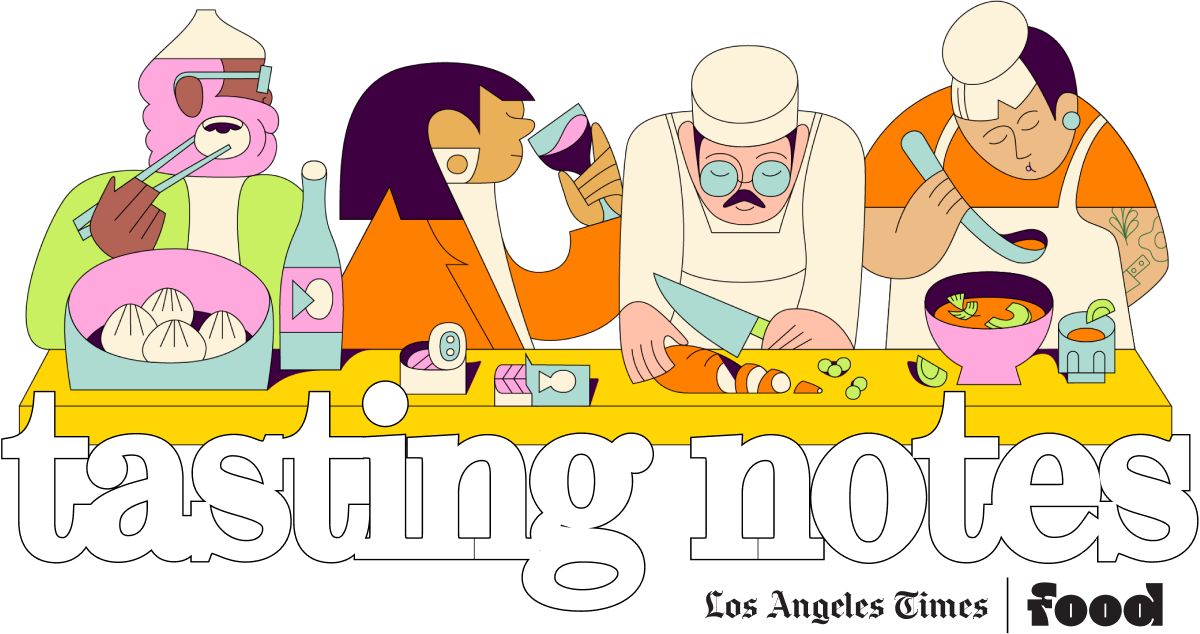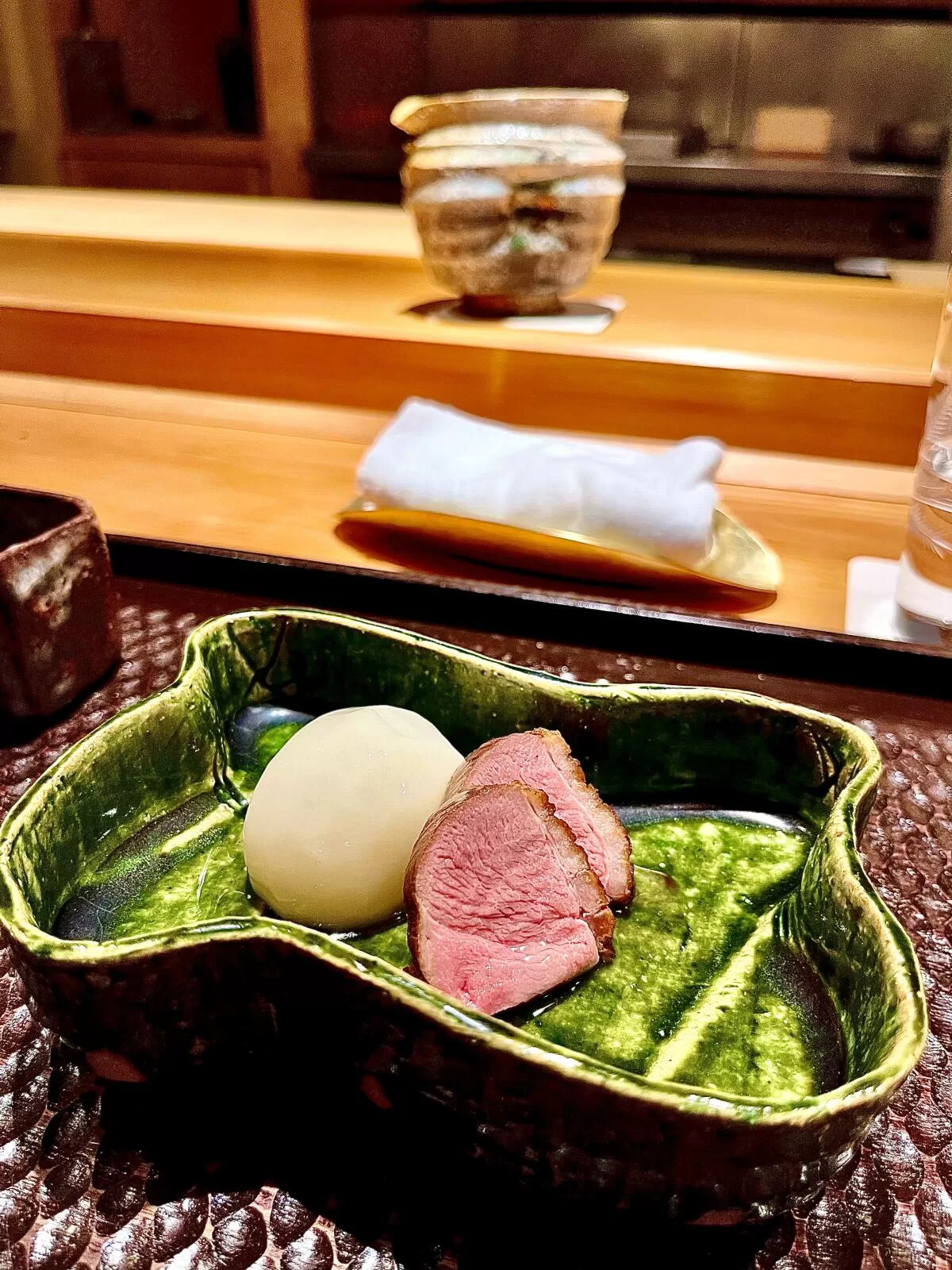The turnip test
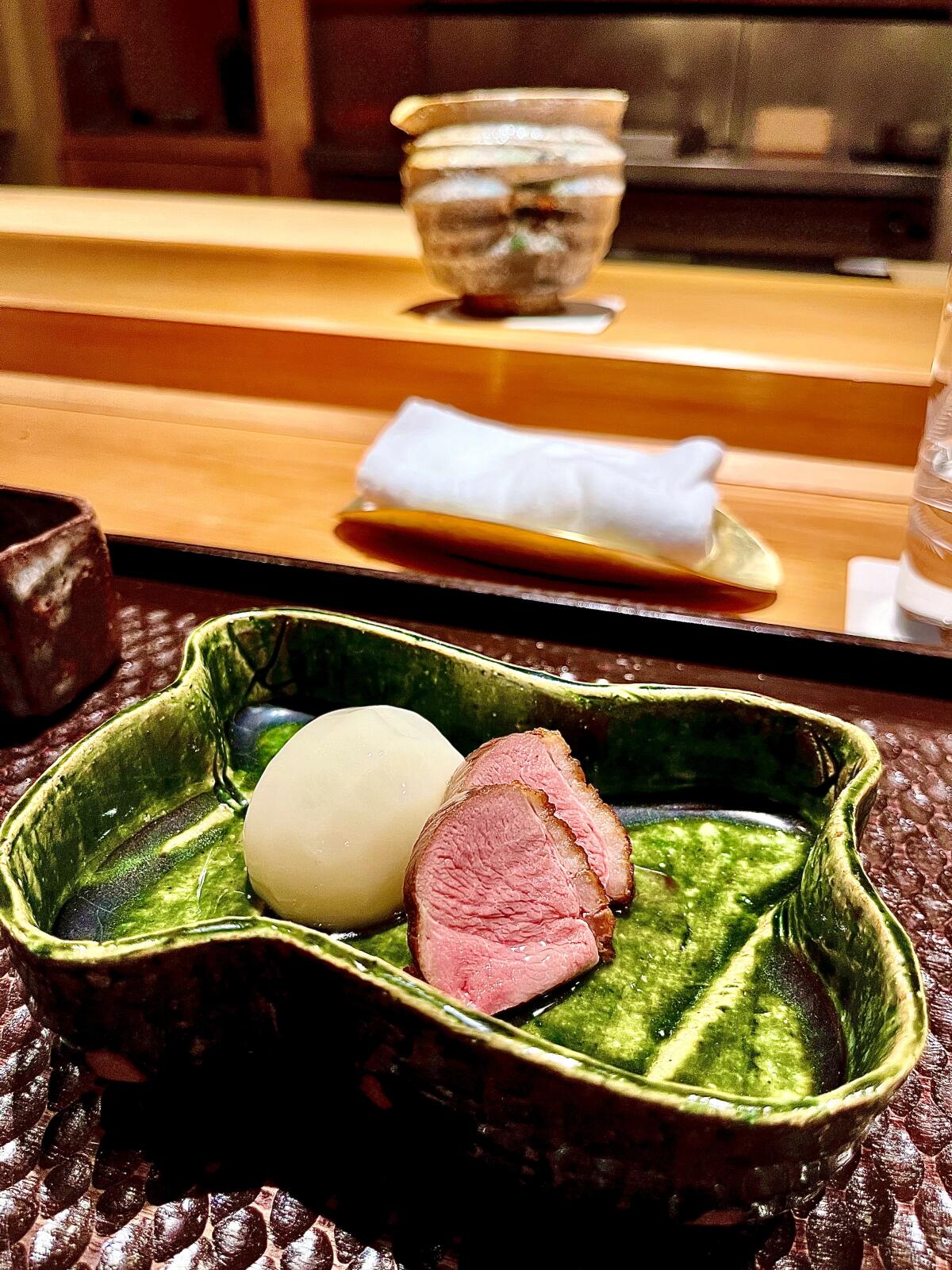
(Laurie Ochoa / Los Angeles Times)
Can a turnip be more luxurious than caviar?
At Hayato, No. 1 on critic Bill Addison’s 2022 list of the 101 best restaurants in Los Angeles and No. 3 on his most recent list, there are many wonderful foods to eat, most harvested from the sea.
But when I had the chance recently to eat at Brandon Hayato’s Michelin two-star restaurant, with just seven seats available each evening (I put myself on the waiting list after unsuccessfully trying for months for a reservation and was able to get two spots after someone canceled), I found that I kept thinking about three humble ingredients: a turnip, a piece of bamboo, a chestnut.
The turnip was served unadorned next to two slices of steamed and grilled duck. As much as everyone loved the duck — one of the rare non-fish dishes Hayato serves in winter — it was the turnip that sparked the most oohs and ahhs.
“The most important vegetable in Japanese food in wintertime is turnip,” Hayato told us. “When we wash rice, we reserve the water and cook the turnips in it.” This gives the turnips “a really white color” and removes some of the bitterness. “Then we cook them one more time in seasoned kombu dashi. It comes out pretty soft. You should be able to split it with your chopsticks.”
He was right, our chopsticks easily went through the turnip.
“When it’s good,” Hayato said after customers kept heaping praise on the turnip, “it’s like a soup dumpling inside. It’s very juicy with a little bit of kombu taste.”
He added: “I started feeling old when my favorite things to eat became things like turnips and bamboo shoots.”
Then there was the chestnut, fried tempura-style and placed beside a barely cooked scallop from Hokkaido. The scallop was luscious, but again, it was the humbler ingredient, the chestnut, that got our attention.
And when Hayato served white amadai, a type of tai or tilefish, we all appreciated the prized winter fish, which he grilled and then steamed in dashi. But we were equally impressed with the wintertime piece of bamboo floating in the dashi, which was light and complex at the same time. As you might expect, dashi is one of Hayato’s obsessions, down to the type of water that is best for his many types of broth.
This kind of obsession spills over into his approach to the more common ingredients that pair with the pricier fish and seafood he serves. It occurred to me during the dinner that the mark of a great luxury meal is not what a chef does with lobster or caviar, but what he or she can do with the humble turnip.
Newsletter
You’re reading Tasting Notes
Our L.A. Times restaurant experts share insights and off-the-cuff takes on where they’re eating right now.
You may occasionally receive promotional content from the Los Angeles Times.
Is that you, Caesar?
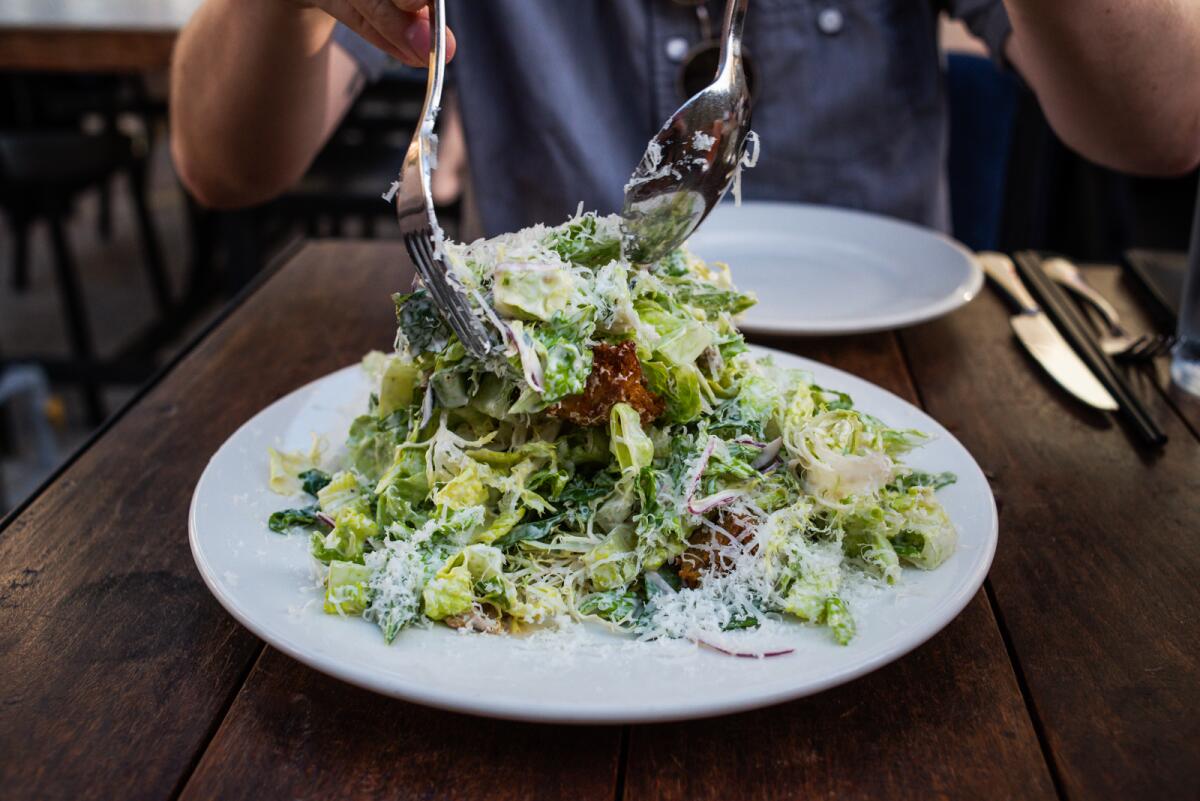
Vietnamese Caesar Salad by Cassia chef Bryant Ng.
(Abby Mahler)
“For me, a Caesar salad is an excuse to shovel dressing and croutons into your mouth,” Cassia chef Bryant Ng told reporter Sarah Mosqueda during an interview about his take on the classic salad with his “not-so-secret ingredient”: fish sauce. “Everything else in the salad is just there to balance that.”
Mosqueda put together a guide to 10 of the many reimagined Caesar salads that are being served across L.A. and Orange counties right now. These include the citrusy kale take on Caesar at Crave in Santa Ana; the classic tableside version at Dear John’s in Culver City; a Japanese Caesar with miso Parmesan dressing at Tsubaki in Echo Park; the bonito Caesar at Kodo in downtown L.A. with karaage-style chicken strips, milk bread croutons and sesame crackers for crunch; and Diego Argoti’s Thai Caesar with fried rice paper in place of croutons and lemongrass in the anchovy dressing at Poltergeist in Echo Park.
And so we don’t lose sight of the original Caesar, food editor Daniel Hernandez went to the Hotel Caesar in Tijuana, where the Caesar is said to have been invented.
“This year, as it happens,” Hernandez writes, “is the centennial of the ‘ensalada Caesar’ at the Hotel Caesar.
“It was around 1924 that Italian transborder emigré Caesar Cardini is said to have first concocted the unmistakable dressing that has since adorned millions of servings of romaine lettuce, according to the restaurant’s contemporary chef and proprietor, Javier Plascencia. The hotel and its restaurant fell into neglect over the decades and changed multiple ownerships. In 2010, then-rising Tijuana star Plascencia took control of the restaurant and reignited the tableside ritual of preparation for the Caesar salad, rekindling a local love for it.
“‘We sell about 2,500 salads a month,’” Plascencia told Hernandez. “‘All tableside.’”
I had the chance to talk with Cardini’s daughter, Rosa, for a 1988 story about the invention of the Caesar and made the surprising discovery that “while a proper Caesar always has anchovy, an authentic one never does.”
“We can’t figure it out,” Rosa Cardini told me when I asked about the anchovy.
“Cardini envisioned his a subtle salad,” I wrote at the time, “but as Rosa pointed out, subtle is exactly what anchovies aren’t.”
Anchovy, as I said in the story, isn’t the only thing Caesar aficionados argue over: “There’s the bite-size vs. whole lettuce leaf debate (the original salad was made with whole leaves arranged as finger food), the mushed vs. the sliced anchovy debate (mushed in the dressing gives anchovy flavor to every bite), and the particularly controversial coddled egg debate (some insist the egg should be broken directly onto the lettuce; others can’t stomach the thought).”
“How could a mere salad cause such emotion?” Julia Child once said of the Caesar.
One thing that has been settled over the years — anchovy is now considered essential to the Caesar. Even at the Hotel Caesar, where as Hernandez experienced it, anchovy is now a part of Plascencia’s version of the Tijuana classic.
The Armenian taco
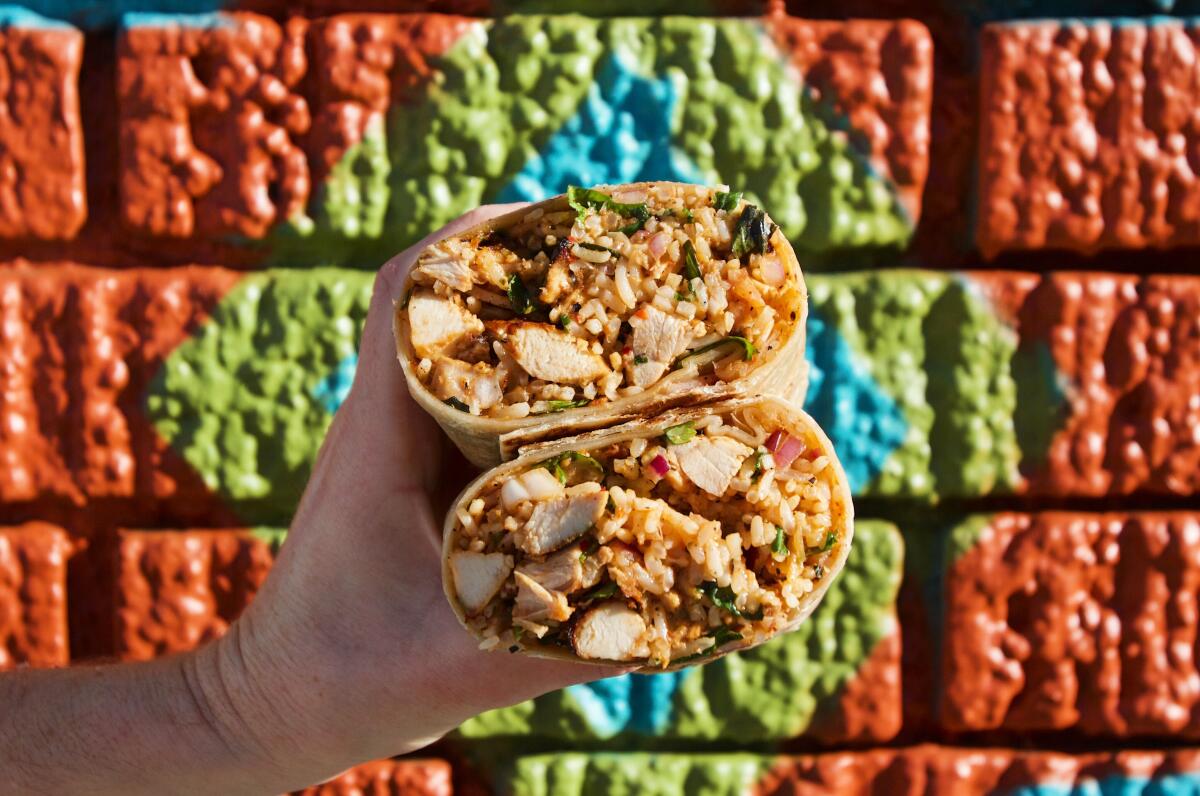
Armenian burritos, tacos and quesadillas are on the menu at Mid East Tacos in Silver Lake, from Mini Kabob’s Armen Martirosyan.
(Stephanie Breijo / Los Angeles Times)
When Armen Martirosyan, co-owner with his family of Mini Kabob in Glendale and in Topanga Social at the Westfield Topanga mall, came to the L.A. Times Test Kitchen this past summer to make Mini Kabob’s Pan-Seared Chicken Cutlets and share the story of his return to the family business, he talked with me about plans to revive his passion project, Mid East Tacos. Martirosyan, after all, is part of what we’ve called Generation Los Angeles, the offspring of first-generation immigrant restaurateurs and cooks who have stayed in the business but are making their own mark on L.A. cuisine. The idea of a pop-up serving Armenian-style tacos and burritos makes sense for an L.A.-raised kid where the taco ideal can absorb many cultures.
Now Martirosyan has gone beyond the pop-up stage and opened the first bricks-and-mortar location for Mid East Tacos, which began, as Stephanie Breijo wrote in her Quick Bites restaurant news column for this week, as an off-item lavash-wrapped burrito at the original Mini Kabob.
“Back then,” Breijo said, “he filled his Ali Baba burrito with kebabs, tabbouleh, potatoes and other items from the restaurant. As it picked up steam among regulars and local press, he began incubating a new concept for tacos and burritos that would combine Armenian and Mexican flavors: kebab meats marinated for 24 to 48 hours, falafel tacos made using his grandmother’s falafel recipe, and salsas made daily — such as a pico de gallo variant essentially made from Mini Kabob’s freshly grilled vegetables, or an arbol-chile-infused toum.”
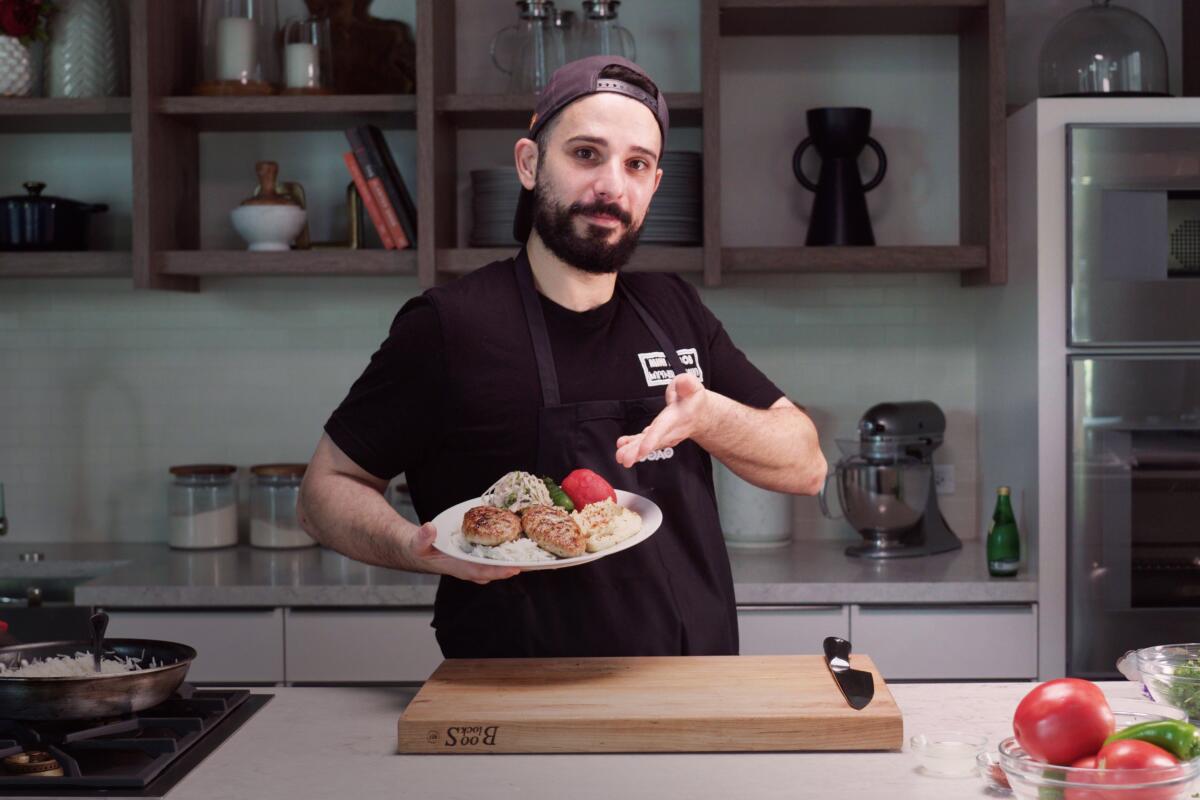
Armen Martirosyan of Mini Kabob and Mid East Tacos in the Times Test Kitchen making his dad’s favorite chicken cutlets.
He also sought advice from “some of his culinary idols, including Guerrilla Tacos founder Wes Avila,” who now runs Ka’Teen in Hollywood and recently closed Angry Egret in Chinatown to prepare for a new restaurant he’s planning to open later this year.
“For me,” Martirosyan told Breijo, “it was very important to make sure that we represented Mexican culture very well, and Armenian Middle Eastern culture very well.”
Year of the dragon at Costco
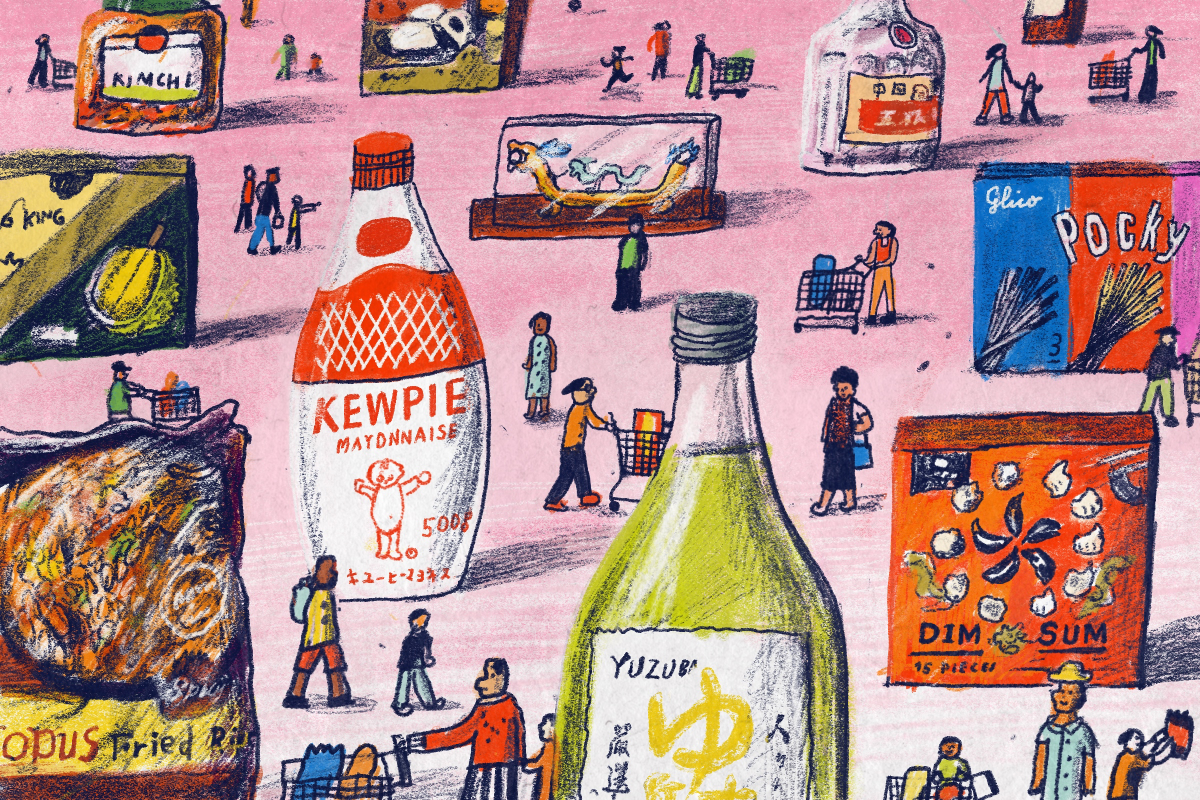
(David Huang / For The Times)
Lunar New Year celebrations will take place all over Southern California starting next weekend and into the month. As Tiffany Tse wrote in her guide to places to gather for Lunar New Year feasts, this year’s celebrations take “on added significance for the Year of the Dragon — revered as the most auspicious animal in the Chinese zodiac calendar.”
Inspired by the season — and the detail that “the typical Costco shopper [is] a 39-year-old Asian American woman earning more than $125,000 a year” — the imaginative Ada Tseng, our former assistant editor of utility journalism, asked readers to help us find Southern California’s “most Asian Costo.” Along with columnist Jenn Harris and West Coast Experiences editor Michelle Woo, Tseng came up with the top 11 Asian Costcos in L.A. and Orange counties.
“What makes a Costco Asian?” they ask in the story. “Frozen dumplings? Curry? Pocky snacks? No, that’s in most Costcos! We’re looking for items beyond the types of Asian food you can also find in a Ralphs. We’re looking for abalone, grass jelly and red ginseng drinks, lumpia, paneer, multiple choices of oyster sauce and a variety of seafood.”
A Whole Foods pro guides us toward the future
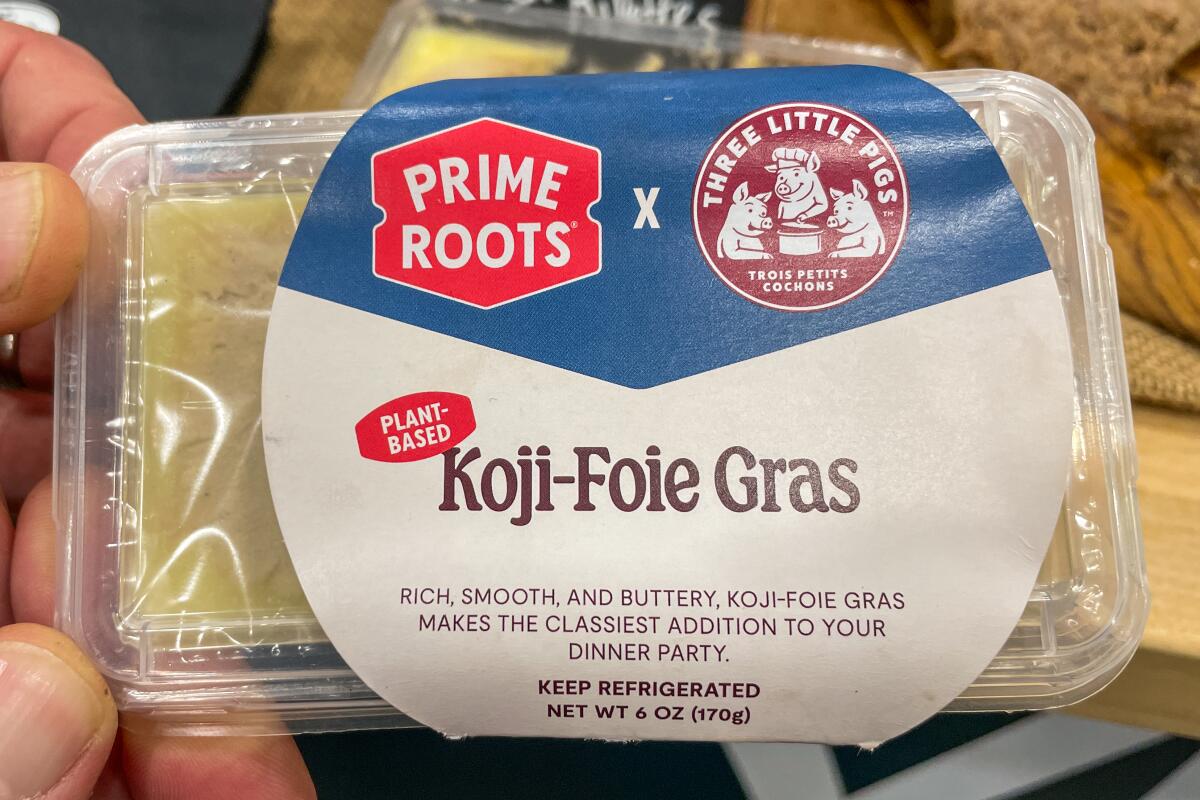
Vegan foie gras at the Winter Fancy Food Show in Las Vegas.
(Jenn Harris / Los Angeles Times)
Ice-cider-immersed blue cheese, more buckwheat in packaged foods plus plant-based marshmallow creme. Those are some of the items Whole Foods Market Ambassador of Food Culture Cathy Strange guided columnist Jenn Harris toward at the Winter Fancy Food Show in Las Vegas late last month. Harris also explored plant-based “koji foie gras,” Super Mario chocolate cookies, sipping broths and more foods that may soon appear on our grocery shelves.
Also …
Finally …
For those of you who don’t subscribe to our Cooking newsletter, I shared the sad news in our most recent edition that L.A. Times Food is losing columnists Lucas Kwan Peterson and Ben Mims along with recipe tester Julie Giuffrida and audience engagement editor Amy Wong due to the layoffs affecting colleagues across the newsroom. All four were vital to our food coverage and will be hugely missed.
Of course, we still have a small but mighty food team dedicated to bringing you news, reviews, features, recipes and live events that reflect the best of Southern California eating, drinking and cooking. Keep reading — and subscribe!
Newsletter
Eat your way across L.A.
Like what you’re reading? Sign up to get it in your inbox every week.
You may occasionally receive promotional content from the Los Angeles Times.
